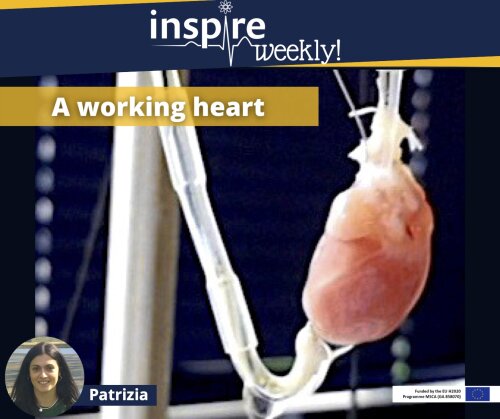07/04/2021 - Patrizia (ESR #12)

This picture shows a rat heart isolated and perfused according to the Langendorff method. This technique permits to study the mechanical activity of isolated mammalian heart, allowing us to measure cardiac contractility (left ventricle pressure or LVP) by means of a latex balloon inserted into the left ventricle and connected to a pressure transducer, as well as coronary perfusion pressure (CPP), recorded by a pressure transducer placed in the inflow line 1. The electrocardiogram (ECG) is also recorded, providing information about the electrical activity of heart.
Unanticipated cardiovascular toxicities have shed light on the necessity to identify cardiovascular safety of drugs in a preclinical setting. In this context, the isolated Langendorff heart model is a useful method to evaluate the effect of drugs on haemodynamic, as well as on electrophysiological parameters. The significant sensitivity and specificity of such approach make it a method with high translational value 2.
During my PhD, I will use the Langendorff technique to assess cardiovascular safety liabilities of novel anti-cancer therapies, specifically receptor tyrosine kinase inhibitors (RTKI) targeting vascular endothelial growth factor (VEGF) signalling pathway 3. This model will complement my in vivo experiments in order to clearly identify the cardiovascular complications due to these drugs, as well as to investigate the mechanisms underlying such toxicities.
References:
- Bell, R.M., Mocanu, M.M. & Yellon, D.M. Retrograde heart perfusion: The Langendorff technique of isolated heart perfusion. Journal of Molecular and Cellular Cardiology 50, 940-950 (2011).
- Authier, S., Pugsley, M.K. & Curtis, M.J. Haemodynamic Assessment in Safety Pharmacology. Handb Exp Pharmacol 229, 221-241 (2015).
- Poster SPS meeting 2019, Barcelona